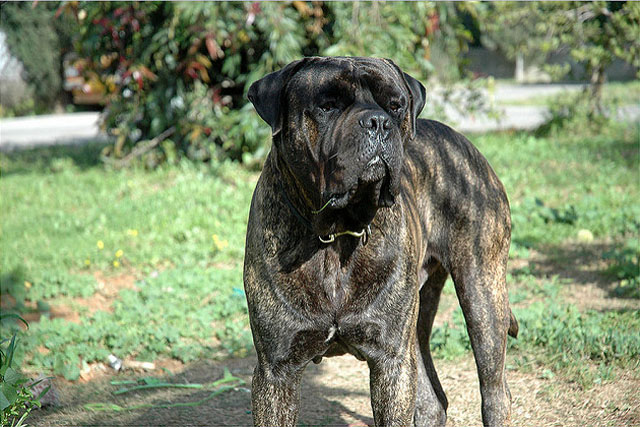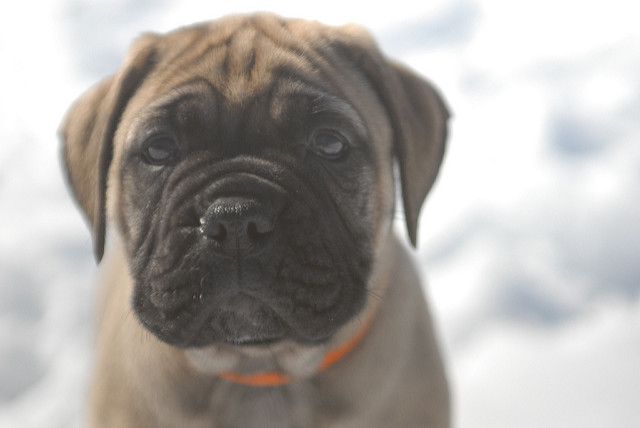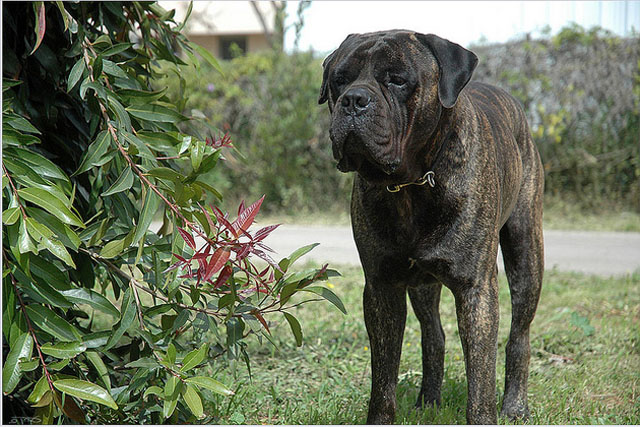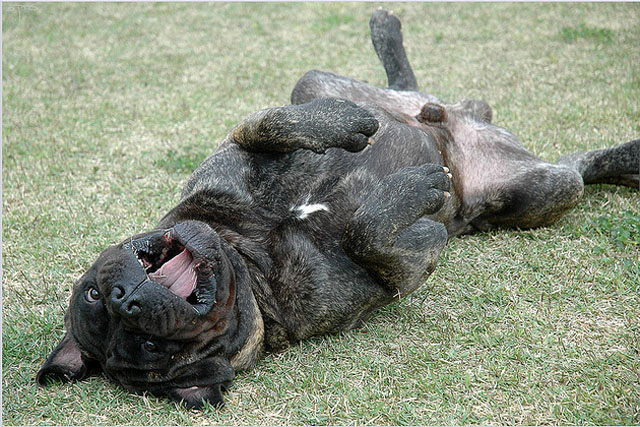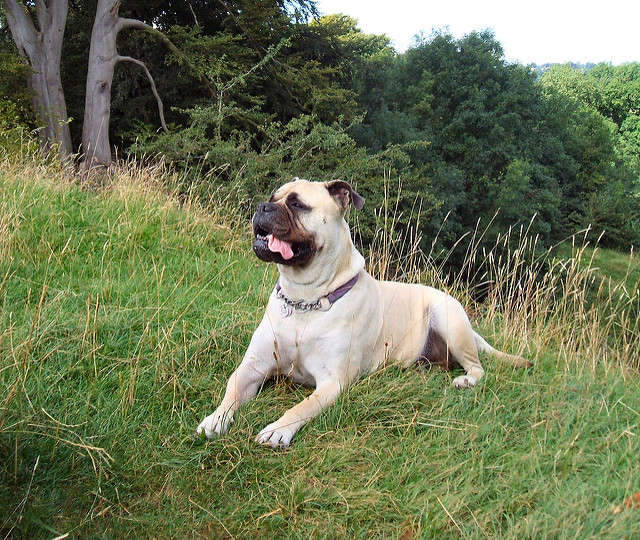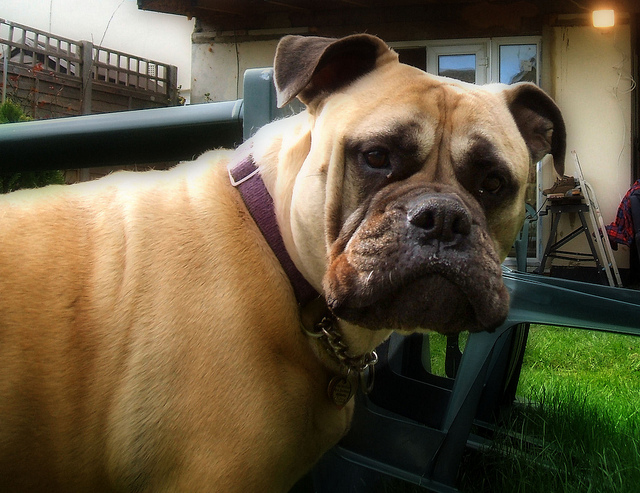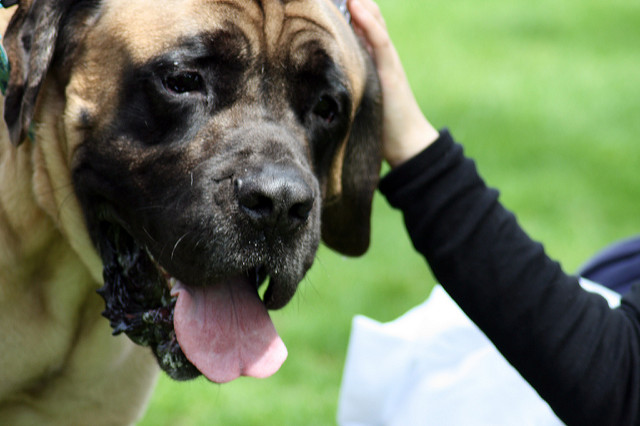Bullmastiffs, often referred to as the “gamekeeper’s night dog,” are powerful, strong dogs that have a long history. The breed was originally developed to work on English estates to keep game protected from thieves. These dogs are known for being willing to please, reliable, and intelligent, making them a great protector and family companion. Through the years, the dogs have starred in many different movies, including “Homeward Bound – Lost in San Francisco,” “Stay,” “Frank,” “Hotel for Dogs,” “The Hound of the Baskervilles,” and “Hooch.” Here’s a closer look at more information about the popular Bullmastiff, from their origin and history to their health and grooming needs.
Origin and History
The Bullmastiff breed was developed around the 1860s in England, and the breed is a cross between the Bulldog and the Mastiff. These dogs were especially created to help monitor huge game preserves and estates quietly, keeping poachers away. They were able to quickly cover short distances, track on their own, and pin and hold the poachers until someone arrived without mauling the poachers. Still today, Bullmastiffs rarely bark unless they think they need to defend their territory or sound off an alarm.
Originally, gamekeepers were using Mastiffs to try to control poaching, but the Mastiff was too slow and large. English Bulldogs were also tried, but they weren’t large enough and were too ferocious. Estate owners wanted fearless dogs that would attack on command, yet they wanted them to be silent when necessary. They were looking for dogs that could hold the poachers without killing them. This led to them crossing the Bulldogs and Mastiffs, resulting in the Bullmastiff. Combining the best of these two breeds, the Bullmastiff breed did well at dealing with poachers. As the need for these dogs disappeared, these dogs were well known for performin well in competitions.
In 1924, the Kennel Club of England recognized the breed, and the American Kennel Club recognized the Bullmastiff in 1933. Still today, the Bullmastiff continues to be a popular dog within the United States, and they are highly sought after dogs for families.
Appearance
The Bullmastiff has a strong, powerful, symmetrical appearance. These powerful, large dogs are not lumbering or overly heavy. They have wrinkled, broad heads, a bit of an under bite, and dark, short muzzles. Their ears are pendant shaped and dark in color, and they have a tail that is set high, tapering just a bit at the end.
Bullmastiffs have a short, dense coat that only sheds moderately year round. Their coat may be brindle, fawn, or red, and their ears and muzzles are both dark. It’s possible for them to have a few small white marks located on their chest, and most have a black mask.
The breed is large, with male standing at between 25 and 27 inches at their withers and females standing between 24 and 26 inches at their withers. Males usually weigh between 110 and 130 pounds, and females are a bit smaller, weighing in at 110 to 120 pounds. A bullmastiff that is shown should have a square proportion.
Bullmastiff Temperament
While Bullmastiffs were developed to patrol groups, stop poachers, and face predators, they were trained that they should not hurt people. Today they make a protective yet docile family pet, yet they still have a watchful eye and an imposing figure. Despite their large appearance, they do very well with children.
Since the Bullmastiff breed is willful and stubborn, training them can be difficult. They need a confident, consistent leader and training must be done with positive reinforcement and calm assertiveness. They often try to manipulate or test their boundaries in order to get their way. For this reason, these dogs may not be a good choice for first time dog owners, since leadership roles must be reinforced and they need to have ongoing socialization with other animals and people.
The Bullmastiff is very protective of their property and their people. However, they do okay with other dogs if they are raised with the other animals. It’s not a good idea to introduce new dogs, particularly those of the same sex, to the home. The breed also needs plenty of exercise and a lot of room.
Grooming
Although Bullmastiff owners may have a huge food bill for these large dogs, they won’t end up with a big grooming bill. Since they have a short coat, regular brushing is enough to deal with their shedding. They only need to be bathed as needed, but it is important to make sure that their wrinkles are kept dry and clean. Between baths, owners can simply use dry shampoos on these dogs to keep them smelling fresh. The ears of Bullmastiffs should be checked each week for irritation and redness, and to prevent infection, use a cleansing solution approved by a veterinarian. Since they are prone to bad breath, it’s essential to brush their teeth each week.
Working Roles
Originally, Bullmastiffs were bred to be working dogs, working to control poaching on large estates. However, today they are mainly used as beloved family pets, although they have appeared in many movies and television shows. In some cases, these dogs are used on farms to accompany farmers and watch over livestock.
Health
Bullmastiffs generally live to be 8 to 10 years old, which is a bit lower than the median lifespan of other purebred dogs. Some of the potential health concerns that may be found in the breed include:
- Elbow dysplasia
- Lymphoma
- Allergies
- Progressive retinal atrophy
- Bloat
- Entropion
- Mast cell tumors
- Hemangiosarcoma
- Cardiomyopathy
- Hip dysplasia
- Subaortic stenosis
- Osteosarcoma
- Hypothyroidism

